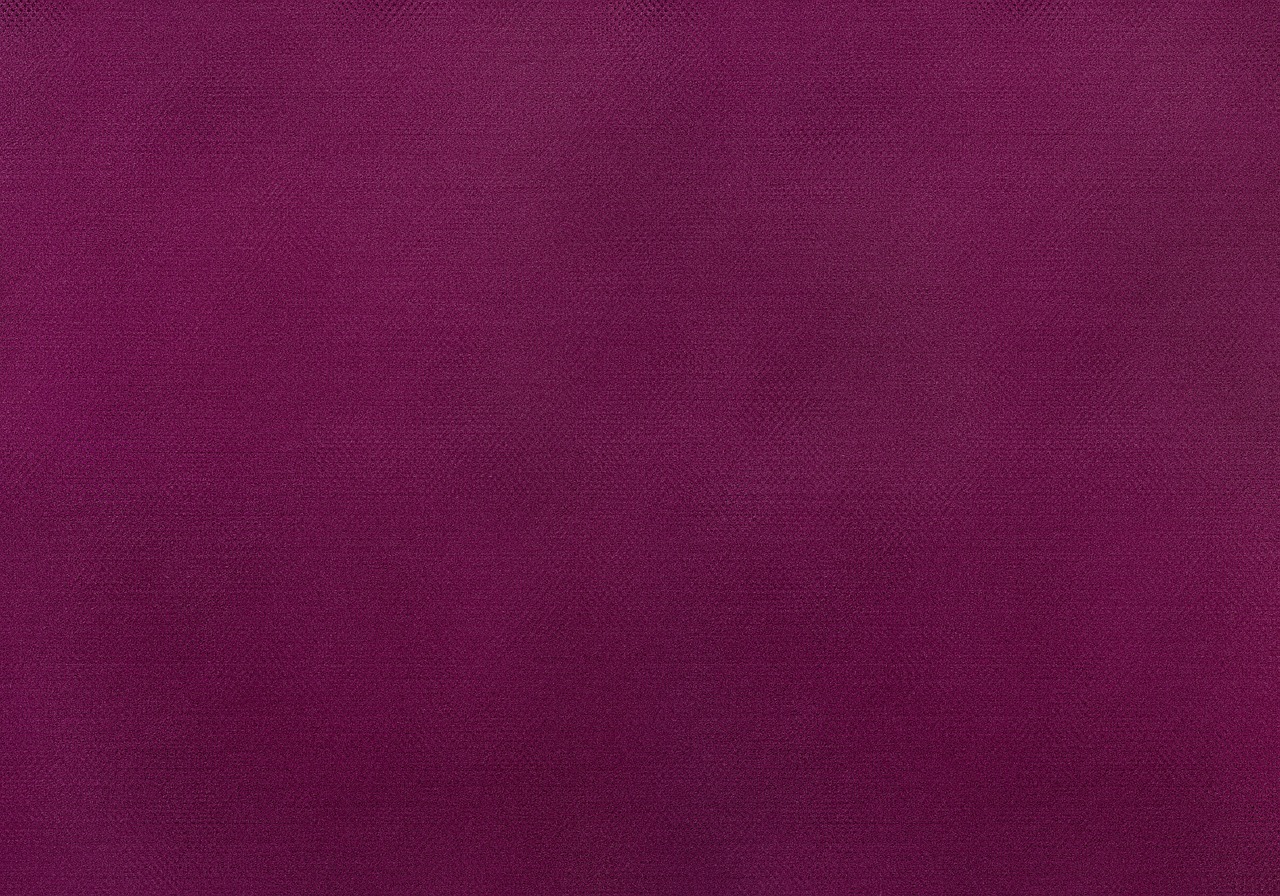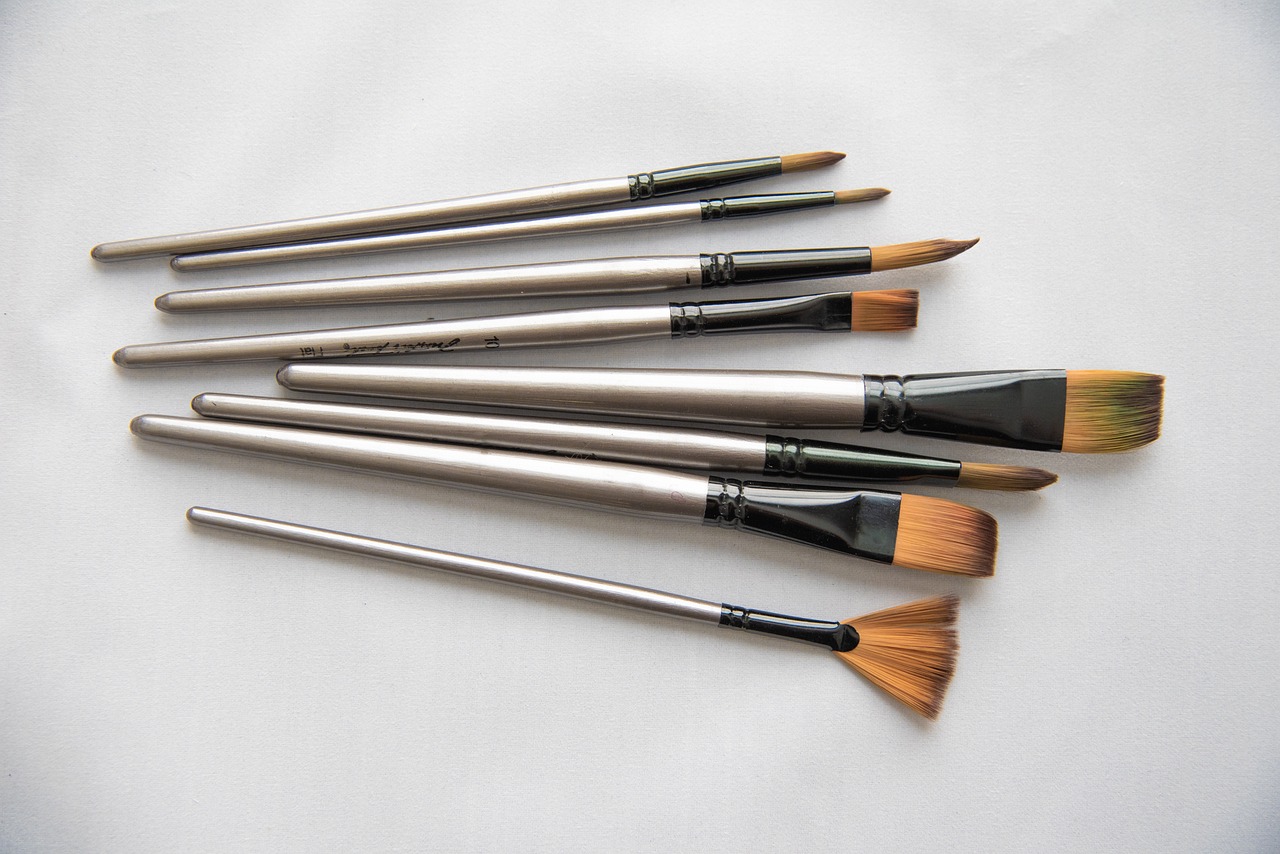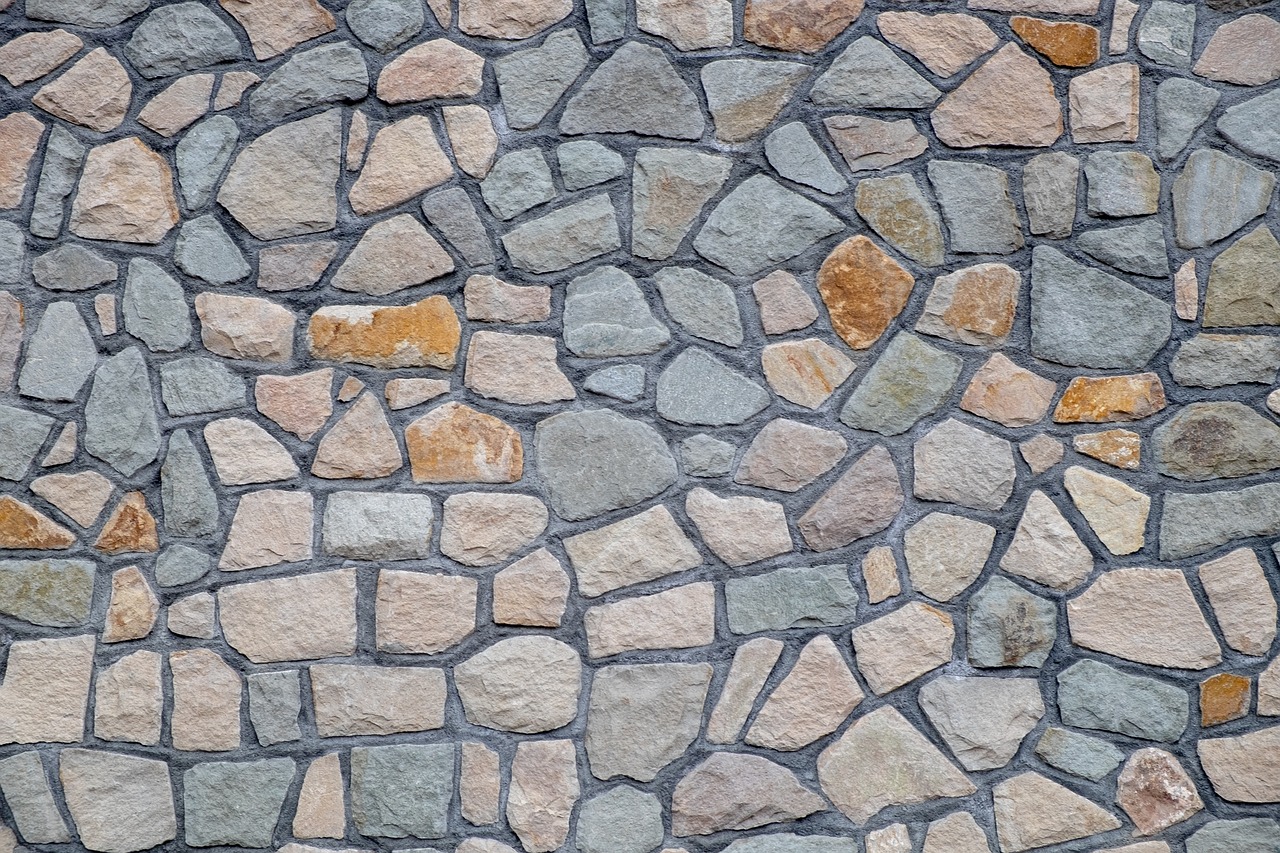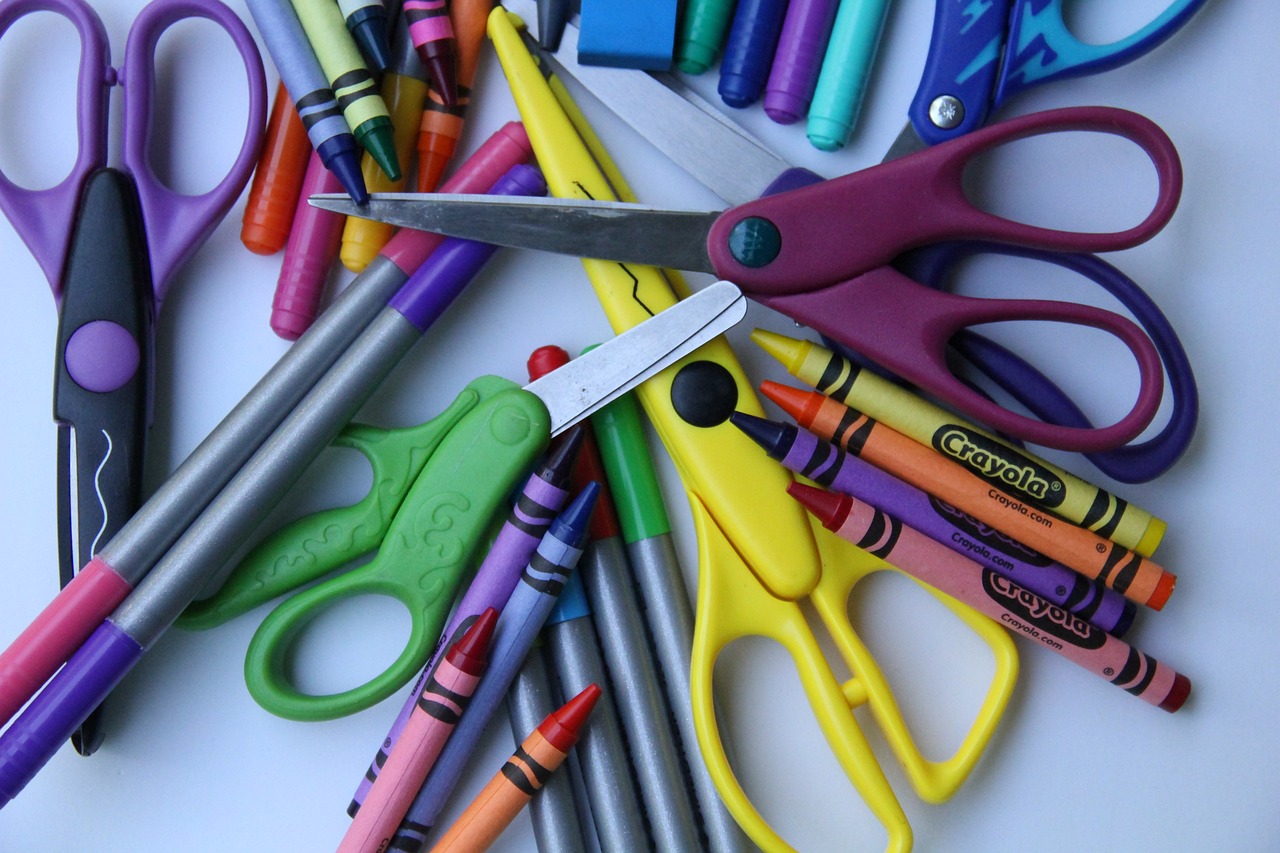From Scraps to Treasures: Money-Saving Tips for Quilters
Quilting is not just a hobby; it's a passion that many people cherish. However, the costs associated with quilting can sometimes put a damper on your creativity. The good news is that you don't have to break the bank to create beautiful quilts! In this article, we will explore various strategies that allow quilters to save money while maximizing their creativity. From effectively utilizing fabric scraps to discovering budget-friendly material sources, we will delve into innovative techniques that enhance your quilting projects without overspending. Are you ready to transform your quilting journey from scraps to treasures?
One of the most rewarding aspects of quilting is the ability to turn leftover fabric scraps into stunning creations. Instead of tossing those remnants aside, why not consider them as potential treasures? By learning how to effectively utilize fabric scraps, you can create unique elements that add character to your quilts. For instance, you can sew together various scraps to form a patchwork design, or use smaller pieces for intricate appliqué designs. The possibilities are endless! Not only does this approach ensure that nothing goes to waste, but it also allows you to express your creativity in new and exciting ways.
When it comes to sourcing materials for quilting, your wallet doesn't have to suffer. There are countless places where you can find affordable quilting supplies without compromising on quality. Thrift stores, for example, can be treasure troves for quilters looking for unique fabrics and materials. You can often find beautiful vintage fabrics that are perfect for quilting projects. Additionally, online marketplaces have made it easier than ever to find great deals on fabric, tools, and other supplies. With a little savvy shopping, you can stock up on everything you need without overspending.
Thrift stores can be a quilter's best friend! Imagine walking into a store filled with racks of clothing and home goods, and spotting a beautiful fabric that could become the centerpiece of your next quilt. To make the most of your thrift store visits, keep an eye out for:
- Old bed linens or tablecloths that can be repurposed.
- Vintage clothing with unique patterns and colors.
- Fabric remnants that are often sold at a discount.
The thrill of the hunt can lead to some incredible finds that add character to your quilting projects while keeping your budget intact.
Another fantastic way to save money is by repurposing old clothing. Instead of letting those worn-out jeans or that dress you no longer wear collect dust, transform them into quilt pieces! This sustainable approach not only saves you money but also gives new life to fabric that might otherwise go to waste. Techniques like cutting and sewing patches from different garments can create a beautiful, eclectic quilt that tells a story and showcases your creativity.
In today's digital age, online marketplaces offer a vast array of quilting materials at competitive prices. Websites like Etsy, eBay, and even Facebook Marketplace allow you to browse through countless options. To navigate these platforms effectively, consider the following tips:
- Set alerts for specific fabric types or colors you’re interested in.
- Compare prices across different sellers to ensure you’re getting the best deal.
- Don’t hesitate to buy in bulk; it often leads to greater savings.
By being resourceful and strategic, you can uncover great deals that will enhance your quilting projects without hurting your wallet.
Why settle for the ordinary when you can explore creative quilting techniques that stretch your fabric and supplies further? Techniques like foundation piecing or improv quilting allow you to experiment with fabric in exciting new ways. These methods not only enhance your projects but also keep costs low. Imagine using those tiny scraps to create a stunning design that looks anything but frugal! The key is to embrace your creativity and think outside the box.
Quilting is often more enjoyable when shared with others. Joining quilting communities can open up a world of shared resources, tools, and fabric swaps. By connecting with fellow quilters, you can discover cost-saving opportunities and gain inspiration for your projects. The quilting community is known for its generosity, and you might find that others are willing to share tips or even swap fabric that you can use in your next creation.
Participating in fabric swaps is a fun way to refresh your stash without spending a dime! These events allow quilters to exchange fabrics they no longer need for new ones that inspire them. Organizing or joining a fabric swap can be a great way to meet new friends and foster a sense of community among quilters. Imagine the excitement of exchanging fabrics and discovering new patterns that you might not have chosen for yourself!
The internet has made it easier than ever to connect with fellow quilters. Online forums and groups provide valuable insights, tips, and support. These communities are often filled with experienced quilters who are eager to share their knowledge. By participating in discussions, you can discover cost-saving resources and foster collaboration among enthusiasts. Plus, you’ll find inspiration from others’ projects that can spark your own creativity!
Why spend a fortune on quilting tools when you can make your own? Creating DIY quilting tools can save you money and enhance your crafting experience. From homemade cutting mats to custom rulers and templates, there are countless projects you can undertake. Not only will you save money, but you’ll also add a personal touch to your quilting supplies. Imagine the satisfaction of using a tool you made yourself!
Did you know you can create a functional cutting mat using everyday materials? With a little creativity, you can fashion a cutting mat that provides precision in your quilting projects without the hefty price tag of store-bought options. Simply layer cardboard or thick plastic sheets and cover them with a protective material. This DIY approach allows you to customize the size and shape to fit your specific needs.
Making custom rulers and templates for your quilting needs is another excellent way to save money. You can use cardboard or plastic sheets to create templates that fit your designs perfectly. This not only allows for greater accuracy but also gives you the freedom to design unique shapes that enhance your quilting projects. Plus, you won't have to shell out cash for specialized tools!
Q: How can I start using fabric scraps in my quilting projects?
A: Begin by sorting your scraps into categories based on size and color. Then, look for patterns that allow for patchwork designs or appliqué techniques to incorporate your scraps creatively.
Q: Where can I find affordable quilting materials?
A: Thrift stores, online marketplaces, and fabric swaps are excellent sources for budget-friendly quilting materials. Always keep an eye out for sales and discounts!
Q: What are some creative techniques to enhance my quilting projects?
A: Techniques like improv quilting, foundation piecing, and using mixed media can add unique elements to your quilts while allowing you to use your existing materials creatively.
Q: How can I connect with other quilters?
A: Joining local quilting groups, participating in online forums, or attending quilting events can help you connect with fellow quilters and share resources and ideas.

Maximizing Fabric Scraps
When it comes to quilting, fabric scraps can often feel like the leftovers of a meal—something to toss aside or forget about. But what if I told you that these seemingly insignificant pieces of fabric can actually be the secret ingredient to your most stunning quilting projects? That's right! By , you not only save money but also unleash your creativity in ways you never thought possible. Imagine transforming a pile of leftover bits into a beautiful quilt that tells a story of its own. It’s like turning trash into treasure, and it all starts with a little imagination and resourcefulness.
First off, let's talk about the different ways you can utilize those scraps. Consider creating a scrap quilt, where you intentionally mix and match various pieces to create a patchwork masterpiece. This technique not only allows you to use up every last inch of fabric but also adds a unique, eclectic vibe to your project. You can even categorize your scraps by color, size, or pattern, making it easier to select pieces that complement each other when you're ready to sew. It’s like building a puzzle where every piece has its place!
Another fantastic way to maximize your scraps is by incorporating them into smaller projects. Think about making potholders, coasters, or even fabric bookmarks. These small items are perfect for using up those tiny bits of fabric that might otherwise go to waste. Plus, they make great gifts! Imagine gifting a friend a handmade potholder featuring a fabric that has a special memory attached to it. It’s a personal touch that truly resonates.
For those who love a bit of challenge, why not try your hand at improv quilting? This freeform style encourages you to embrace the imperfections of your scraps and allows for spontaneous creativity. You can start with a few larger pieces and then fill in the gaps with smaller scraps, letting the quilt evolve organically. This method not only reduces waste but also makes for a truly one-of-a-kind piece that reflects your artistic journey.
Don't forget about the power of appliqué! By adding scraps as appliqué shapes onto a solid background, you can create stunning designs that are rich in texture and color. Whether you choose to make flowers, animals, or abstract shapes, this technique allows you to give new life to those leftover bits while adding depth to your quilt. It’s like painting with fabric, where your only limit is your imagination!
Lastly, consider organizing a scrap exchange with fellow quilters. This is a fun way to not only declutter your own stash but also to acquire new scraps that might inspire your next project. You can meet up for a casual swap or even organize an online event, where you can share photos of your scraps and trade with others. It’s a win-win situation that fosters community and creativity.
In conclusion, maximizing fabric scraps is not just about saving money; it’s about embracing creativity and sustainability. By viewing these remnants as opportunities rather than leftovers, you can create beautiful, meaningful quilts that reflect your unique style. So, the next time you find yourself with a pile of scraps, remember: they might just be the key to your next quilting adventure!
- What can I do with very small fabric scraps? You can use them for smaller projects like patchwork coasters, fabric bookmarks, or even as stuffing for toys!
- How can I organize my fabric scraps? Consider sorting them by size, color, or type. Use bins or clear bags to keep them tidy and easily accessible.
- Are scrap quilts as valuable as traditional quilts? Absolutely! Scrap quilts often tell a unique story and can be just as beautiful and cherished as those made from larger pieces.

Budget-Friendly Material Sources
When it comes to quilting, the joy of creating beautiful pieces can sometimes be overshadowed by the costs of materials. However, there are numerous budget-friendly sources available that can help you keep your expenses in check while still allowing your creativity to flourish. From hunting for bargains in local thrift stores to exploring the vast offerings of online marketplaces, the opportunities are endless. Let’s dive into some exciting avenues where you can find quality quilting materials without breaking the bank!
One of the best places to start is your local thrift store. These hidden gems often house a variety of fabric remnants, old quilts, and even sewing tools at a fraction of the retail price. The thrill of sifting through racks of clothes and shelves filled with items can lead to unexpected treasures. Look for cotton shirts, denim jeans, or even bed linens that can be repurposed into stunning quilt pieces. The key is to keep an open mind and envision how each item can be transformed. You might just find that perfect fabric that inspires your next project!
When visiting thrift stores, having a strategy can significantly enhance your shopping experience. Here are some tips to maximize your finds:
- Visit regularly: Inventory changes frequently, so stopping by often can yield new treasures.
- Check the fabric section: Look for fabric remnants or old curtains that can be cut up for your quilts.
- Be patient: Sometimes, the best finds require a bit of digging and time.
Another fantastic resource for budget-friendly materials is the world of online marketplaces. Websites like Etsy, eBay, and even Facebook Marketplace can offer a plethora of options at competitive prices. You can find everything from fabric bundles to quilting tools, often at discounted rates. The convenience of shopping from home while browsing through countless listings makes online shopping an attractive option. Just remember to read reviews and check seller ratings to ensure you're getting quality products.
Don’t overlook your own closet! Old clothing that you no longer wear can be a fantastic source of quilting material. Think about those shirts you loved but can’t fit anymore or those jeans that have seen better days. By repurposing old clothing, you not only save money but also contribute to sustainability. Cutting up these garments into quilt squares can give them a new life, and each piece will carry its own story, adding a personal touch to your quilt. Plus, it’s a great way to declutter your wardrobe!
When navigating online marketplaces, here are a few tips to help you snag the best deals:
- Set alerts: Many platforms allow you to set alerts for specific items, so you can be notified when new listings appear.
- Join quilting groups: Many online communities share deals or even host sales within their groups.
- Compare prices: Always check multiple listings to ensure you’re getting the best deal possible.
In conclusion, finding budget-friendly materials for quilting doesn’t have to be a daunting task. By exploring thrift stores, repurposing old clothing, and utilizing online marketplaces, you can gather an impressive array of materials without stretching your budget. Each of these sources not only provides savings but also opens doors to creativity, allowing you to craft unique quilts that reflect your personal style. So grab your fabric scissors and get ready to transform those budget finds into beautiful quilted treasures!
Q: Where can I find the best deals on quilting materials?
A: Thrift stores, online marketplaces, and fabric swaps are excellent places to find budget-friendly quilting materials.
Q: How can I repurpose old clothing for quilting?
A: Old clothing can be cut into squares or strips and used as fabric for your quilts, giving them a new life and adding a personal touch.
Q: Are online purchases safe for quilting supplies?
A: Yes, as long as you check seller ratings and reviews, online purchases can be a safe and convenient way to find quality quilting supplies.

Thrift Store Finds
Thrift stores can be an absolute goldmine for quilters looking to save money while still indulging their creative passions. Imagine walking through aisles filled with all sorts of fabric, from vintage prints to modern designs, just waiting to be transformed into beautiful quilts. The thrill of the hunt is part of the fun, and you never know what treasures you might uncover. When you step into a thrift store, you're not just shopping; you're embarking on a mini-adventure where each corner could hold the perfect fabric for your next project.
One of the best strategies for finding valuable quilting materials at thrift stores is to go in with an open mind. Instead of looking for specific items, be ready to explore a variety of fabrics and supplies. You might find old bed linens that can be repurposed into quilt backing or even curtains that have a stunning pattern just begging to be cut up. Additionally, keep an eye out for items that could be used as batting or padding, such as old blankets or comforters. These materials can often be found at a fraction of the price you would pay at a fabric store.
It's also helpful to develop a keen eye for quality. As you sift through the racks, look for fabrics that are in good condition, without any stains or tears. Fabrics made from natural fibers like cotton and linen are ideal for quilting, as they tend to be more durable and easier to work with. If you're unsure about a fabric's quality, consider how it feels in your hands and whether it has the right weight and texture for your project. Don't be afraid to ask store employees for help or recommendations; they often know the inventory well and can point you in the right direction.
Another exciting aspect of thrift store finds is the opportunity to discover unique and one-of-a-kind pieces that you won't find anywhere else. Vintage fabrics can add a special touch to your quilts, giving them character and history. You can create a quilt that tells a story, combining different eras and styles into a cohesive piece. As you gather materials, consider how each fabric can contribute to the overall theme or design of your quilt.
Finally, remember to be patient and persistent. Not every trip to a thrift store will yield a treasure trove of quilting supplies, but with time and effort, you'll build a fantastic stash of materials that can elevate your quilting projects. Plus, the experience itself can be incredibly rewarding. You’ll meet fellow fabric enthusiasts, share tips, and maybe even find a new favorite spot for your next crafting adventure.
- What types of fabrics should I look for in thrift stores? Look for natural fibers like cotton and linen, as they are durable and ideal for quilting.
- How can I tell if a fabric is in good condition? Check for stains, tears, and overall texture. If it feels good and looks good, it’s likely a great choice!
- Are there specific times when thrift stores have better selections? Many thrift stores restock on certain days, so visiting during those times can yield better finds.

Repurposing Old Clothing
Repurposing old clothing into quilting materials is not just a money-saving strategy; it's a creative adventure that breathes new life into forgotten fabrics. Imagine that old pair of jeans or that dress you haven’t worn in years—these items can transform into stunning quilt pieces that tell a story all their own. By cutting up garments and using their fabric, you can create unique designs that reflect your personal style while being environmentally friendly. Not only does this approach save you money, but it also allows you to embrace sustainability, making your quilting journey even more rewarding.
When you start looking at old clothes as potential quilting supplies, the possibilities become endless. You can use various materials, such as cotton shirts, wool sweaters, and even stretchy fabrics from old leggings. Each piece holds its own texture, color, and history, which can add a rich narrative to your quilt. For instance, a quilt made from a beloved family member's clothing can evoke nostalgia and warmth, making it a cherished heirloom.
Here are some tips to effectively repurpose old clothing for your quilting projects:
- Assess the Fabric: Before cutting, examine the clothing for its fabric quality. Look for pieces that are still in good condition, free from holes or heavy wear.
- Color Coordination: Consider how the colors and patterns of the clothing will work together in your quilt. Mixing various textures and hues can create a visually appealing design.
- Cutting Techniques: Use sharp fabric scissors to cut the clothing into squares or strips. Ensure you maintain uniform sizes for a more cohesive look in your quilt.
- Embellishment: Don’t shy away from using buttons, zippers, or pockets from the clothing as embellishments in your quilt. These elements can add character and uniqueness to your project.
As you embark on this creative journey, remember that repurposing old clothing is not just about saving money; it's also about storytelling. Each piece of fabric carries memories and emotions, making your quilt not only a beautiful creation but a tapestry of your life experiences. So, the next time you think about tossing out those old clothes, consider how they could become cherished components of your next quilting masterpiece!
Q: Can any type of clothing be used for quilting?
A: Yes! You can use various types of clothing, including cotton shirts, denim jeans, and even wool sweaters. Just ensure the fabric is in good condition and suitable for quilting.
Q: How do I prepare old clothing for quilting?
A: Start by washing and drying the clothing to remove any dirt or odors. Then, assess the fabric quality and cut it into desired shapes or sizes for your quilt.
Q: Will using old clothing affect the quality of my quilt?
A: If the fabric is in good condition, it should not affect the quality. However, it's essential to consider the fabric's durability and how it will hold up over time.
Q: Can I mix different fabric types in one quilt?
A: Absolutely! Mixing different fabric types can add texture and visual interest to your quilt, but be mindful of how they behave when sewn together.

Online Marketplaces
In the digital age, online marketplaces have revolutionized the way quilters shop for materials. No longer are we confined to local fabric stores; we now have a world of options at our fingertips! From well-known platforms like eBay and Etsy to specialized quilting websites, the possibilities for discovering quality fabric and supplies are endless. The key is knowing how to navigate these platforms effectively to score the best deals.
One of the most appealing aspects of shopping online is the ability to compare prices across different sellers. Imagine finding a beautiful fabric for your next quilt project, only to discover that another seller offers it at a significantly lower price! This is where your savvy shopping skills come into play. Always take a moment to do a quick search and compare prices before making a purchase. Additionally, many online marketplaces offer customer reviews, which can be invaluable in assessing the quality of materials before you buy.
When exploring online marketplaces, consider the following tips:
- Set a Budget: Before you start browsing, determine how much you’re willing to spend. This will help you avoid impulse purchases and keep your finances in check.
- Search for Discounts: Many sellers offer discounts for bulk purchases or seasonal sales. Always check for coupon codes or promotional offers.
- Join Mailing Lists: Sign up for newsletters from your favorite fabric shops. They often send out exclusive deals and early access to sales.
- Be Patient: Sometimes, the best deals take time to find. Don't rush into a purchase; wait for the right opportunity.
Moreover, consider exploring niche marketplaces that focus specifically on quilting supplies. These platforms often have a curated selection of fabrics and tools that cater directly to quilters' needs, making your search much easier. You can find unique prints and specialty materials that you might not come across in traditional stores.
Another great feature of online shopping is the ability to buy second-hand materials. Websites like Facebook Marketplace or local community groups often have listings for fabric and quilting supplies at a fraction of the retail price. It's a fantastic way to save money and find unique items that can add character to your quilts.
In summary, online marketplaces are a treasure trove for quilters looking to save money while expanding their fabric collection. With a little research and patience, you can uncover fantastic deals that enhance your quilting projects without straining your budget. So, grab your laptop, get comfy, and start exploring the vibrant world of online quilting supplies!

Creative Quilting Techniques
When it comes to quilting, creativity knows no bounds! Embracing innovative techniques can breathe new life into your projects while helping you save money. One of the most exciting aspects of quilting is the ability to experiment with different styles and methods, allowing you to stretch your fabric further and create unique designs that are a true reflection of your artistic vision.
One technique that has gained popularity among quilters is the use of improv quilting. This method encourages you to break free from traditional patterns and embrace spontaneity. Instead of following a strict design, you can mix and match fabric scraps, creating a quilt that tells a story through its randomness. It’s a liberating approach that not only reduces waste but also enhances your creativity. Imagine piecing together vibrant colors and varied textures, resulting in a quilt that is as unique as you are!
Another fantastic way to maximize your materials is by exploring foundation piecing. This technique involves sewing fabric pieces onto a foundation, usually paper or fabric, which allows for precise shapes and angles. It’s perfect for using up those pesky little scraps that are too small for traditional quilting but too beautiful to toss aside. Plus, the foundation provides stability, making it easier to work with tricky shapes. You might find that your quilts take on a whole new level of sophistication with this method!
Don't overlook the charm of appliqué as a creative technique. This involves sewing a piece of fabric onto another fabric, allowing you to add intricate designs and patterns without needing a lot of fabric. You can use small pieces of leftover fabric to create stunning shapes—flowers, animals, or abstract designs. The beauty of appliqué is that it gives you the freedom to express your creativity while using up those scraps that would otherwise go unused.
Moreover, consider experimenting with free-motion quilting. This technique allows you to sew in any direction, creating beautiful, intricate designs that can transform your quilt into a work of art. It’s a fantastic way to use your quilting skills creatively, and you can practice on smaller projects to build your confidence. The best part? You don’t need to invest in expensive tools; just your sewing machine and a little practice will do the trick!
Lastly, don’t forget the power of patchwork. This classic technique involves sewing together various pieces of fabric to create a larger piece, and it’s perfect for using up scraps. You can create a stunning patchwork quilt that showcases your personality and style. The beauty of patchwork lies in its versatility; you can choose to go for a coordinated color scheme or a more eclectic mix of patterns. Either way, you’ll end up with a quilt that’s uniquely yours!
In summary, embracing creative quilting techniques not only enhances your projects but also allows you to save money by utilizing every last scrap of fabric. Whether you choose to improvise, foundation piece, appliqué, free-motion quilt, or patchwork, the possibilities are endless. So grab those scraps, unleash your creativity, and let your quilting journey be a testament to your resourcefulness and artistic flair!
- What is improv quilting? Improv quilting is a technique that encourages spontaneity and creativity, allowing you to mix and match fabric scraps without following a strict pattern.
- How can I use small scraps of fabric? Small scraps can be used in foundation piecing, appliqué, or patchwork techniques to create unique designs and reduce waste.
- What tools do I need for free-motion quilting? You’ll need a sewing machine with a free-motion foot, a darning foot, and some practice fabric to get started!
- Can I make a quilt with just scraps? Absolutely! Many quilters create stunning quilts entirely from scraps, showcasing their creativity and resourcefulness.

Joining Quilting Communities
Quilting is not just a solitary activity; it’s a vibrant community filled with passionate individuals who share a love for fabric, creativity, and storytelling through stitches. By , you open yourself up to a world of resources, support, and inspiration that can significantly enhance your quilting journey. Imagine being part of a group where everyone understands your obsession with fabric and the thrill of a well-stitched quilt! It’s like finding your tribe, and the benefits are endless.
One of the most exciting aspects of these communities is the opportunity for fabric swaps. Participating in swaps allows you to refresh your stash without spending a dime. You can trade your unused fabric for new-to-you pieces that might just spark your next project. Not only does this practice promote sustainability, but it also fosters a sense of camaraderie among quilters. Plus, there’s something exhilarating about receiving a surprise package filled with fabric from a fellow quilter!
Additionally, online forums and groups serve as invaluable resources for quilters of all skill levels. Whether you’re a beginner looking for advice or a seasoned quilter seeking inspiration for your next masterpiece, these platforms are gold mines of information. Members often share tips, tutorials, and even their own patterns, allowing you to learn and grow without the need for expensive classes. Just think of the wealth of knowledge you can tap into!
To give you an idea of the types of communities you might encounter, here’s a quick overview:
| Community Type | Description |
|---|---|
| Local Quilting Guilds | In-person groups that meet regularly to share projects, skills, and resources. |
| Online Forums | Web-based platforms where quilters can ask questions, share ideas, and post projects. |
| Social Media Groups | Facebook, Instagram, and other social media platforms where quilters connect and share. |
Joining these communities not only helps you save money but also enriches your quilting experience. You can find new friends, learn new techniques, and even collaborate on projects. The sense of belonging that comes from being part of a quilting community can reignite your passion and creativity. So, why not take the plunge? Seek out local guilds, dive into online forums, or connect with quilters on social media. You never know what amazing opportunities await you!
- How can I find a local quilting community? Check local craft stores, libraries, or community centers for bulletin boards with information about quilting groups. Online searches for "quilting guilds near me" can also yield results.
- Are online quilting communities worth joining? Absolutely! They provide access to a wealth of knowledge, resources, and support that can enhance your quilting skills.
- What should I bring to a fabric swap? Bring fabric that you no longer use, along with any quilting supplies you might want to trade. It's a great way to clear out your stash while acquiring new materials!

Fabric Swaps
Participating in is one of the most delightful and cost-effective ways to refresh your quilting stash without spending a dime. Imagine this: instead of hoarding fabric that you might never use, you can exchange your unused pieces for fresh, exciting fabrics that inspire your next project. It’s like a treasure hunt where everyone walks away with something new! Not only do you get to declutter your sewing space, but you also connect with fellow quilters, creating a sense of community and camaraderie.
So, how do you get started with fabric swaps? First, you need to find a group or community where swaps are organized. This could be a local quilting guild, an online forum, or even social media groups dedicated to quilting. Once you find a group, it’s essential to understand the rules of engagement. Some swaps might have specific themes or guidelines regarding the quality and quantity of fabric to be exchanged. For instance, you might be asked to bring a certain number of fat quarters or yardage, and it’s crucial to ensure that your offerings are in good condition to maintain a positive swapping experience.
When preparing for a swap, consider these tips:
- Assess Your Stash: Take a good look at your current fabric collection. Identify fabrics that no longer inspire you or that you have no plans for. This will help you make informed decisions about what to bring to the swap.
- Quality Over Quantity: It’s better to bring a few high-quality pieces than a large quantity of mediocre ones. Fellow quilters will appreciate your thoughtfulness in selecting beautiful fabrics.
- Be Open-Minded: Sometimes, you might receive fabrics that aren’t your usual style. Embrace the opportunity to experiment with new patterns and colors!
After the swap, don’t forget to share your new finds with the community! Show off your projects using the swapped fabrics and inspire others to participate in future swaps. This not only fosters a sense of belonging but also encourages creativity and collaboration within the quilting community.
In conclusion, fabric swaps are a fantastic way to save money, refresh your fabric collection, and build relationships with fellow quilters. So, gather your unused fabrics, find a local or online swap, and dive into this rewarding experience that combines frugality with fun!
Q: What types of fabrics can I bring to a fabric swap?
A: Generally, you should bring high-quality fabrics that are clean and in good condition. Fat quarters, half yards, or remnants are commonly accepted.
Q: How do I find fabric swap events?
A: Check local quilting guilds, community centers, or online platforms such as Facebook groups dedicated to quilting. Many quilters also organize informal swaps through social media.
Q: Are there any costs associated with fabric swaps?
A: Most fabric swaps are free to participate in, but some may have a small fee to cover refreshments or venue costs.
Q: What if I don’t have any fabric to swap?
A: You can always ask if you can participate by donating fabric or supplies. Many groups appreciate any contributions, even if you don’t have fabric to swap.

Online Forums and Groups
In the ever-evolving world of quilting, serve as a vibrant hub for enthusiasts to connect, share, and learn from one another. Imagine a cozy café where quilters from all walks of life gather to sip coffee and exchange tips, stories, and experiences—that’s the essence of these digital communities! Whether you're a seasoned quilter or just starting out, joining an online group can open doors to a wealth of knowledge and inspiration.
One of the biggest advantages of these platforms is the access to diverse perspectives. Members often share their unique techniques, patterns, and solutions to common quilting challenges. You might find someone who has tackled a problem you've been struggling with, or perhaps they'll introduce you to a new style or method that you never considered. The collaborative spirit of these forums fosters creativity, allowing you to expand your quilting repertoire.
Additionally, many online groups organize fabric swaps, where members can trade materials they no longer need. This is not only a fantastic way to refresh your fabric stash without spending a dime but also a chance to connect with fellow quilters who share your passion. The excitement of receiving a package filled with surprise fabrics can be akin to unwrapping a gift on your birthday!
Furthermore, online forums often feature tutorials and challenges that encourage members to try new projects. Participating in these challenges can be a great way to push your creative boundaries while engaging with the community. You might find yourself inspired to tackle a quilt pattern that seemed too complicated before, all because a fellow member shared their journey through it.
To get the most out of these online groups, consider the following tips:
- Be active: Engage with posts, ask questions, and share your own experiences. The more you participate, the more you'll learn!
- Respect the community: Every group has its own culture. Be sure to read the rules and guidelines to foster a positive environment.
- Share your work: Don’t hesitate to showcase your projects. Feedback from others can be incredibly encouraging and might spark new ideas.
In essence, online forums and groups are not just about saving money; they’re about building a community where you can grow as a quilter. The friendships formed and the knowledge exchanged can enrich your quilting journey in ways you never imagined. So, why not dive in and see what treasures await you in the world of online quilting communities?
| Question | Answer |
|---|---|
| How do I find quilting forums online? | You can search for quilting forums on social media platforms, dedicated quilting websites, or by using search engines to find popular quilting communities. |
| Are there any costs associated with joining online quilting groups? | Most online quilting groups are free to join, although some may offer premium memberships with additional resources. |
| Can I sell my quilts in these forums? | Many forums have sections for members to sell their work, but it's important to check the group rules regarding selling and advertising. |
| What if I have a question about a quilting technique? | Feel free to post your question in the forum! Most members are eager to help and share their knowledge. |

DIY Quilting Tools
Creating your own quilting tools can be a game-changer for both your budget and your creative process. Instead of spending a fortune on specialized equipment, why not take a trip down the DIY lane? Not only does this approach save you money, but it also allows you to customize your tools to fit your unique quilting style. Imagine the satisfaction of crafting a tool that perfectly meets your needs while expressing your personal flair!
One of the most essential tools in any quilter's arsenal is the cutting mat. Instead of shelling out for a pricey store-bought version, you can make a functional cutting mat using materials you likely already have at home. For instance, consider using a large piece of cardboard or an old vinyl tablecloth. Simply lay it flat on your workspace, and voilà! You have a makeshift cutting mat that provides a good surface for precision cutting. Just remember to replace it when it starts to wear out.
Another fantastic DIY project is creating custom rulers and templates. This can significantly enhance your quilting experience. You can use materials like cardboard or even clear plastic sheets to make your own templates for different quilt shapes. By doing this, you have the freedom to create any size or shape you desire, tailored specifically for your projects. Plus, you can easily adjust them as your quilting skills evolve. Just think of the possibilities! You can create templates for intricate designs or even simple squares, allowing for greater accuracy and creativity in your quilting.
In addition to cutting mats and rulers, you might also consider making your own pressing tools. For example, a simple homemade iron rest can be fashioned from a piece of wood covered in fabric. This not only protects your ironing surface but also keeps your iron handy while you work. The best part? You can personalize it with your favorite fabric, adding a touch of charm to your quilting space.
As you embark on your DIY journey, remember that the internet is a treasure trove of tutorials and ideas. Websites like Pinterest and YouTube offer countless videos that guide you step-by-step through various DIY projects. You can find everything from making a rotary cutter holder to creating a fabric storage solution. The possibilities are endless, and the best part is that you can adapt each project to fit your specific needs.
Lastly, don't forget to share your creations with fellow quilters! Joining online forums or local quilting groups can provide a platform for you to showcase your DIY tools, exchange ideas, and even collaborate on projects. You never know; someone might be inspired by your ingenuity and create their own version, leading to a ripple effect of creativity within the quilting community.
Q: What materials do I need to make my own cutting mat?
A: You can use cardboard, an old vinyl tablecloth, or even a large piece of thick fabric as a base. Make sure it’s something sturdy that can withstand cutting.
Q: How do I make custom rulers and templates?
A: Use cardboard or clear plastic sheets to cut out the desired shapes. You can use a straight edge to ensure clean lines and accuracy.
Q: Are DIY tools as effective as store-bought ones?
A: Absolutely! While they may not have the same durability as professional tools, DIY tools can be highly effective and tailored to your specific needs.
Q: Where can I find tutorials for DIY quilting tools?
A: Websites like Pinterest, YouTube, and various quilting blogs are excellent resources for finding step-by-step tutorials.
Q: Can I personalize my DIY tools?
A: Yes! Personalization is one of the best parts of making your own tools. You can choose fabrics, colors, and designs that reflect your style.

Homemade Cutting Mats
Creating your own cutting mat is not only a fantastic way to save money, but it also allows you to customize the size and features to fit your unique quilting needs. Imagine being able to cut fabric on a surface that perfectly matches your workspace! The good news is that making a homemade cutting mat is easier than you might think. You can use materials that are often readily available at home or can be purchased at a low cost.
One of the most popular methods for making a cutting mat is to use a piece of cardboard or plywood. These materials provide a sturdy base that can withstand the pressure of rotary cutters and scissors. If you opt for cardboard, consider layering several pieces together to increase durability. For a smoother cutting experience, you can cover the surface with a layer of clear vinyl. This not only protects your cutting surface but also helps the fabric glide smoothly as you cut.
Another option is to use a large piece of self-healing cutting mat material, which can often be found at craft stores. If you have some old vinyl flooring scraps, these can also be repurposed into a cutting mat. Simply cut the vinyl to your desired size, and you have an instant cutting surface that is easy to clean and maintain.
When creating a homemade cutting mat, consider the following tips:
- Size Matters: Make sure your mat is large enough to accommodate the biggest pieces of fabric you typically work with. A larger mat can save you time and frustration.
- Grid Lines: If you want precision in your cuts, draw grid lines on your mat using a permanent marker. This will help you measure and cut accurately.
- Stability: Ensure your cutting mat stays in place while you work. You might want to add some non-slip material underneath to prevent it from sliding around.
In addition to saving money, making your own cutting mat can be a fun and fulfilling project that lets you express your creativity. Plus, every time you use it, you'll have the satisfaction of knowing you crafted something uniquely yours!
Q: Can I use a regular table as a cutting surface instead of a cutting mat?
A: While you can use a regular table, it might get damaged over time from cutting. A cutting mat protects your table and provides a better cutting experience.
Q: How do I clean my homemade cutting mat?
A: If you've used vinyl or plastic, simply wipe it down with a damp cloth. For cardboard, avoid getting it wet; instead, use a soft brush to remove fabric dust.
Q: Will using a homemade cutting mat affect the quality of my cuts?
A: As long as your mat is flat and stable, it should not affect the quality of your cuts. In fact, a good homemade mat can enhance your cutting precision!

Custom Rulers and Templates
Creating for your quilting projects can be a game changer, both for your budget and your creativity. Instead of spending a fortune on specialized tools that may only serve one purpose, why not craft your own? This approach not only saves you money but also allows you to tailor your tools to fit your unique quilting style. Imagine having a ruler that perfectly matches the dimensions you need for a specific design! It’s like having a personal assistant that knows exactly what you want.
To get started, you'll need some basic materials that you likely already have at home. Consider using items such as:
- Cardboard or sturdy plastic sheets
- Clear tape or adhesive
- Ruler or straight edge
- Marker or pen
First, measure and cut your cardboard or plastic to the desired size. This can be as simple as replicating the dimensions of a store-bought ruler or crafting a completely custom shape that suits your quilting needs. Once you have your base, use a marker to draw the measurements along the edge. If you want to make it even more functional, consider adding notches or markings for specific angles or shapes that you frequently use in your quilting projects.
Another innovative idea is to create templates for specific quilt blocks or shapes. To do this, you can use lightweight cardboard or even freezer paper, which is sturdy yet easy to cut. Simply draw your desired shape, cut it out, and you have a reusable template! This is particularly useful for intricate designs that require precision, allowing you to save time and fabric while achieving those stunning results.
Moreover, if you have access to a cutting machine, you can take your custom tools up a notch by designing and cutting out templates with intricate designs that would be difficult to achieve by hand. This not only enhances your creativity but also gives your quilts a professional touch. Just think about how impressive it would be to showcase quilts with perfectly cut shapes that you designed yourself!
In summary, making your own custom rulers and templates can be a fun and rewarding experience. It not only saves you money but also allows you to express your creativity and make quilting a more personalized journey. So grab those materials, unleash your imagination, and see how these simple tools can elevate your quilting game!
Q: What materials do I need to make custom rulers and templates?
A: You will need sturdy cardboard or plastic sheets, a ruler, a marker, and clear tape or adhesive.
Q: Can I use my custom templates multiple times?
A: Yes! If made from durable materials, your templates can be reused for multiple quilting projects.
Q: How can I ensure accuracy when creating my templates?
A: Use a straight edge and a precise measuring tool to draw your shapes accurately. Taking your time will yield the best results.
Frequently Asked Questions
- How can I effectively use fabric scraps in my quilting projects?
Utilizing fabric scraps is all about creativity! You can create patchwork designs, add unique borders, or even make small projects like coasters or bags. Think of scraps as puzzle pieces; they might seem small, but when combined, they can create something beautiful and unique!
- Where can I find budget-friendly quilting materials?
Thrift stores, garage sales, and online marketplaces are fantastic places to hunt for affordable quilting materials. You can often find quality fabrics and tools at a fraction of the price. It's like a treasure hunt where every find can lead to a new project!
- What are some tips for repurposing old clothing into quilting materials?
Start by selecting garments made from cotton or other quilting-friendly fabrics. Cut them into usable pieces, and don’t be afraid to mix patterns and colors. This approach not only saves money but also gives your quilts a personal touch, like a story woven into every stitch!
- How do fabric swaps work?
Fabric swaps are a fun way to exchange materials with other quilters. You can organize a swap in your local community or join online groups. Simply bring your unwanted fabrics and trade them for new ones. It’s a great way to refresh your stash without spending a dime!
- Can I make my own quilting tools?
Absolutely! DIY quilting tools can save you money and allow you to customize them to fit your needs. For instance, you can make homemade cutting mats from cardboard or create custom rulers from sturdy plastic. It’s both economical and rewarding to craft your own supplies!



















